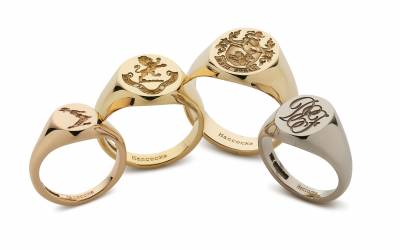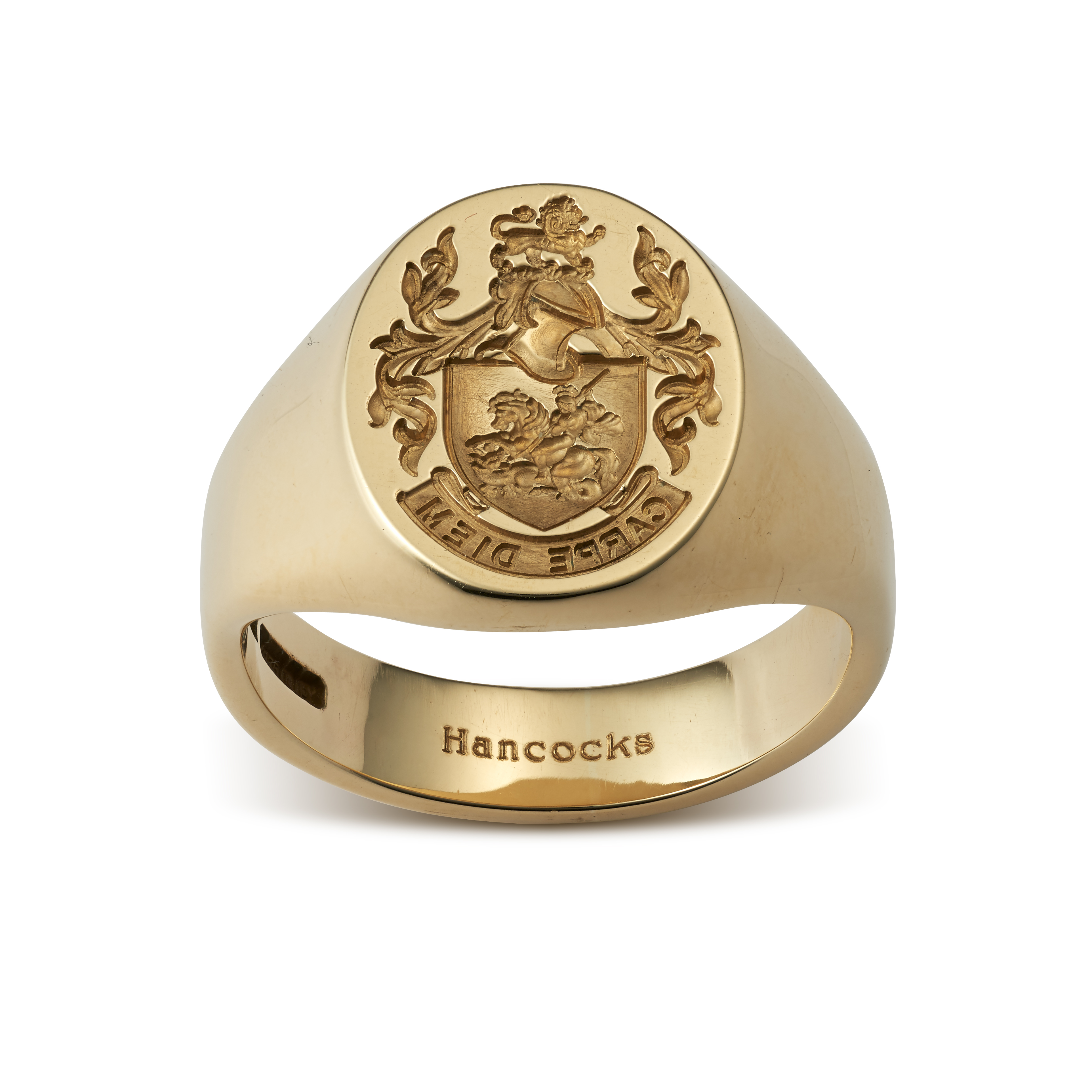Used by Mesopotamians and ancient Egyptians, signet rings are some of the world’s earliest adornments. The introduction of sealing wax in the Middle Ages saw the rings transformed from a raised relief to sunken (intaglio), which left a better impression when dipped in wax and used as a way of authenticating documents. By the late 19th century, they were used extensively, with those bearing the family crest passed down through generations of noble families.
Today, signet rings are enjoying something of a renaissance. Jeweller Hancocks, which has been producing them since 1849, goes so far as to report a roaring trade. Although the focus is still very much on traditional crests, it has also seen a boom in more esoteric commissions. “Some clients opt for their business logo or their favourite pastimes, such as football or even weightlifting,” explains director Guy Burton. “Others might request a mini portrait of a loved one or a Masonic symbol.”








